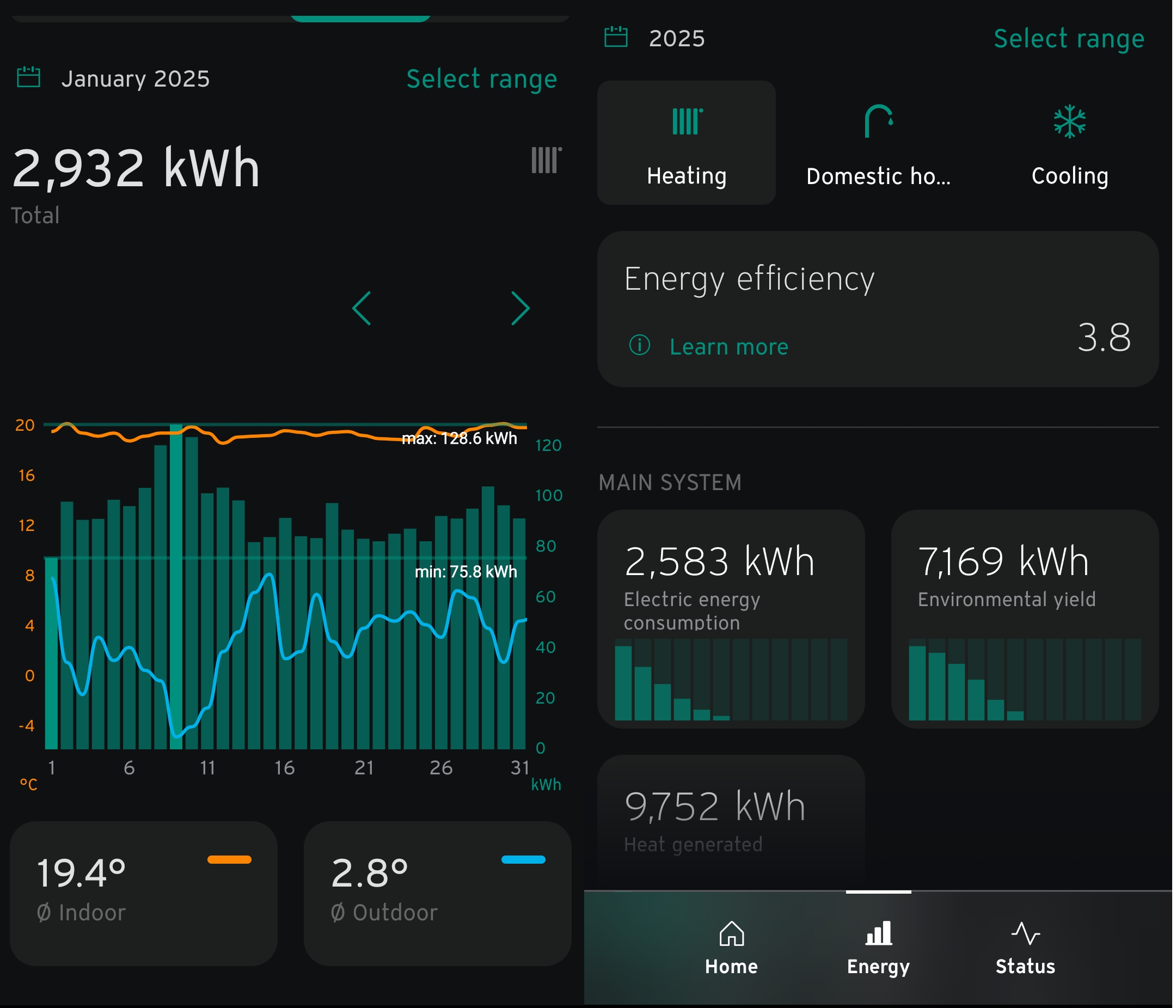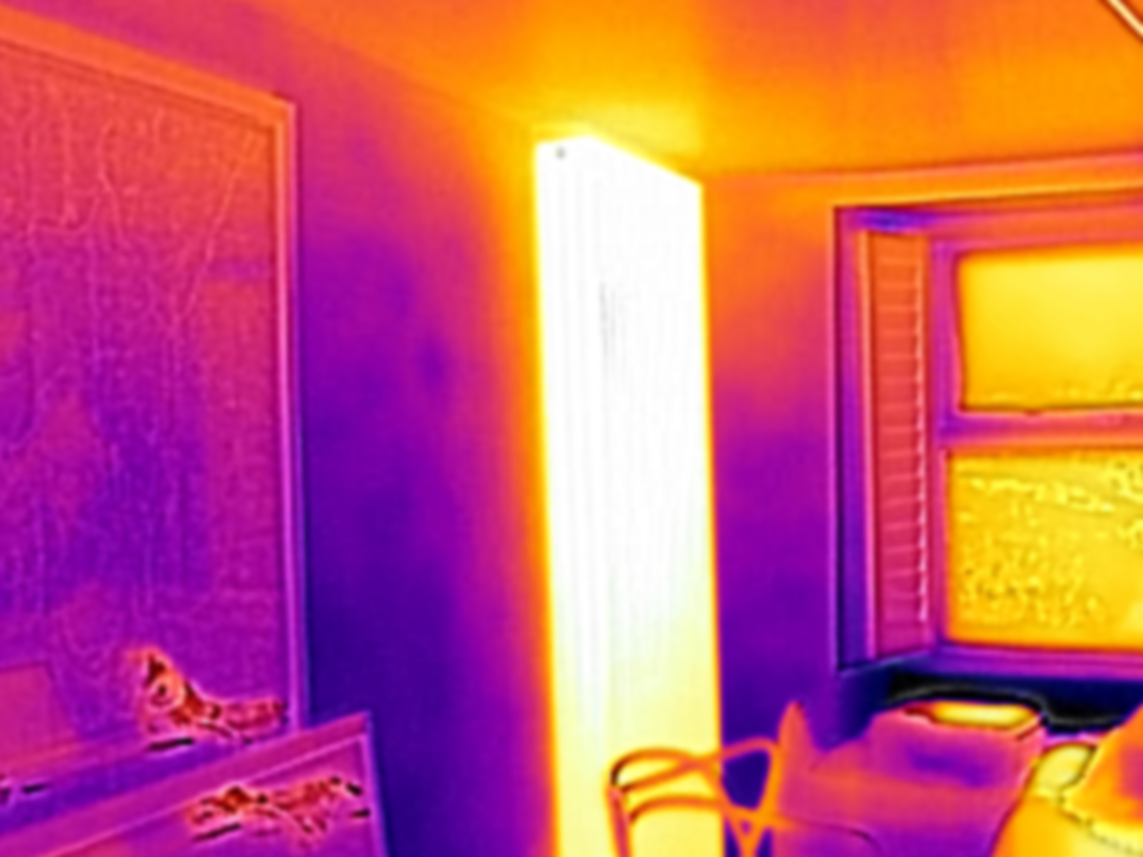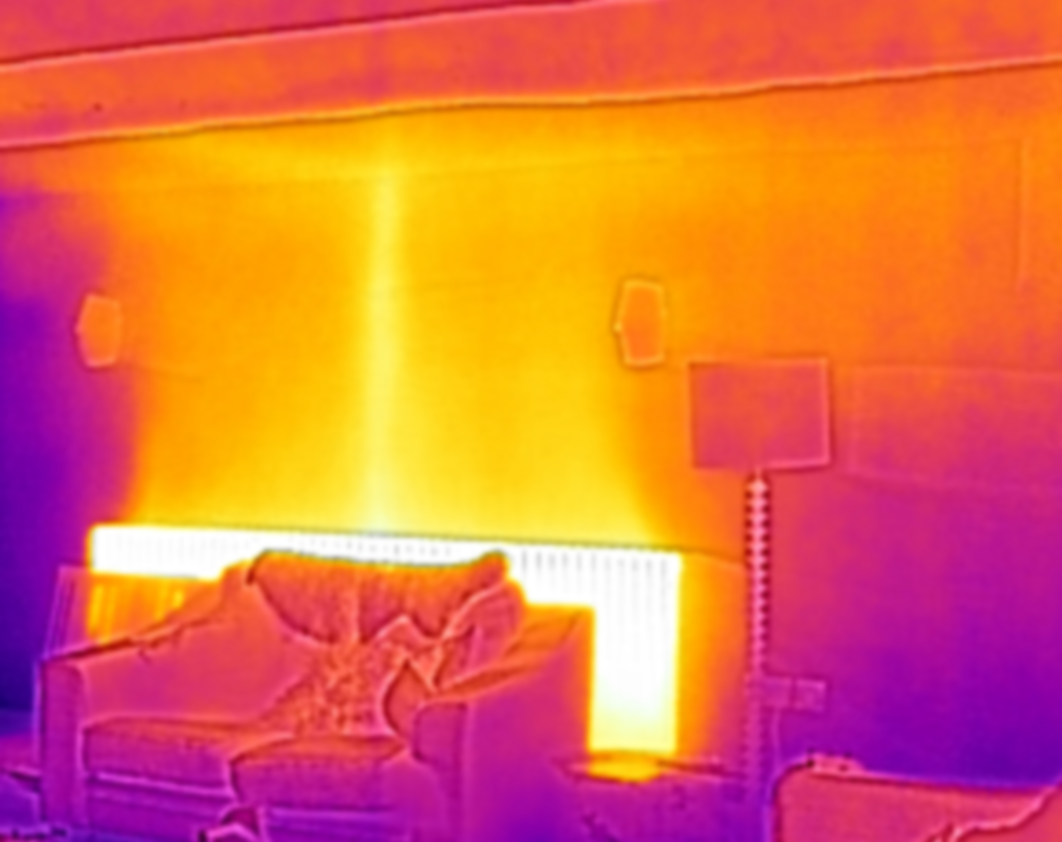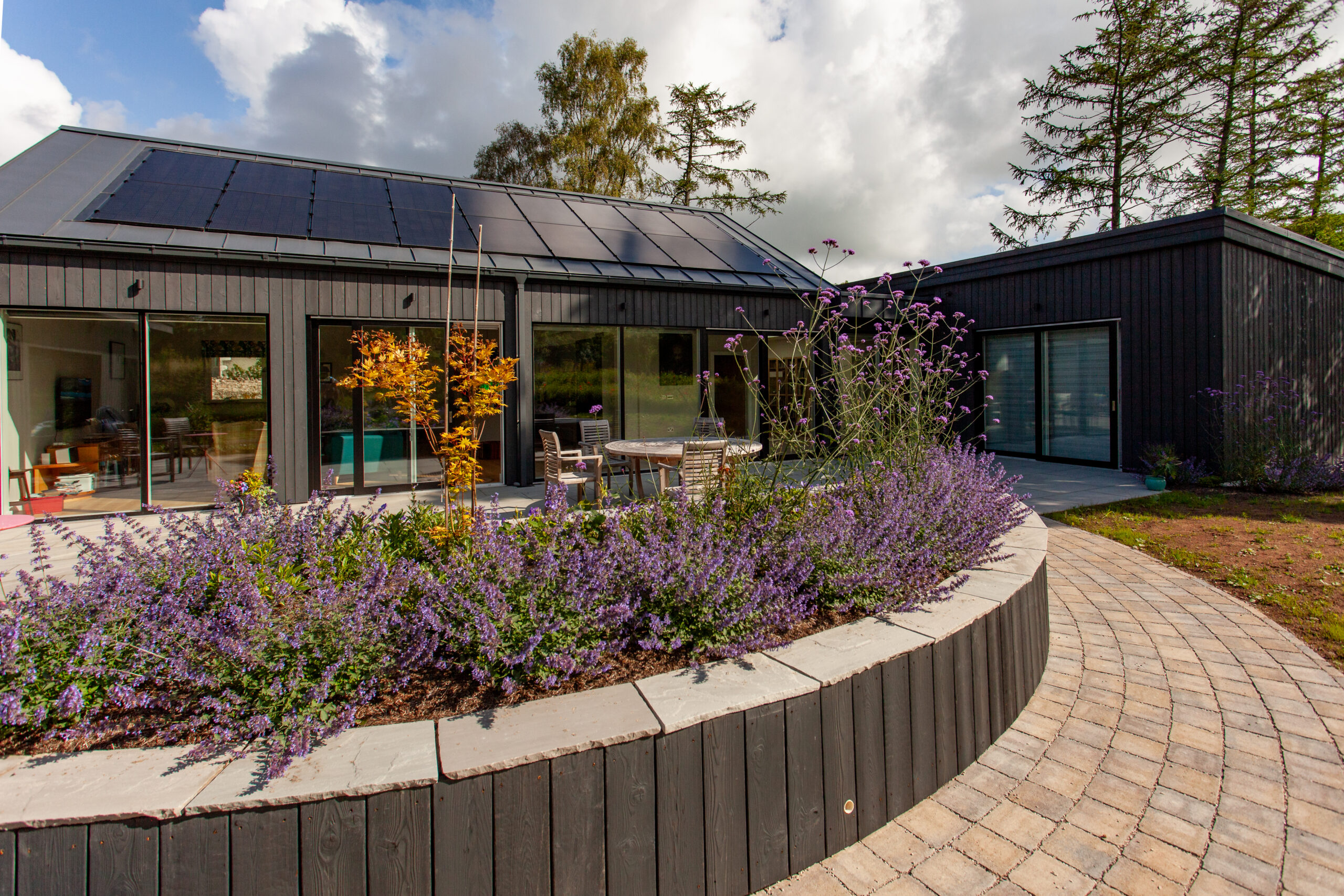Expanding on one of our previous case studies and myth-busting series, we wanted to demonstrate that heat pumps can not only work—but thrive—in historic properties.
The Property
This project involved a 3-bedroom, 125 m² semi-detached home, originally constructed around 1850. The building fabric presented typical challenges for older properties:
- Floors: A mix of uninsulated solid and suspended timber.
- Walls: Predominantly thick limestone rubble (up to 1m in places), with minimal insulation.
- Roof: Upgraded with 300mm of wool-type insulation.
- Windows & Doors: Modern double glazing and insulated timber doors.
- Ventilation: Passive via trickle vents, with a single-room MVHR unit trialed in one bathroom.
- Solar Gain: South-facing wall, but approximately 50% shaded in winter due to surrounding trees and buildings.
In summary, while the property had some lower-risk thermal upgrades, there still remains a number of opportunities for further improvement.
The Heat Pump and Heating System
A 15kW Vaillant Arotherm (R410A) heat pump was installed with new low temperature radiator heating system. The MCS certificate certified the installation with a design Seasonal Coefficient of Performance (SCOP) of 3.01 and a radiator flow temperature of 45 Degrees. Despite the building’s age and fabric, the system has exceeded expectations. Some data from the system for 2025 is shown below.

Performance Highlights
- Comfort: The target indoor temperature was set at 20°C, with January 2025 averaging 19.4°C—partly due to natural temperature fluctuations and the property being unoccupied for a portion of the month.
- Efficiency for January to July 2025:
- Heating SCOP: 3.8
- Combined heating & hot water SCOP: 3.6
- Cost: January 2025 heating cost was approximately £220, during a colder-than-average winter month.
- Resilience: The system maintained comfort even during a cold snap down to -4.8°C, with no occupants providing incidental heat.
- Power: The heat pump has ample capacity. Real-world data indicates that the property requires approximately 6kW of heating power at -2.5°C, meaning the installed unit is oversized. However, it continues to operate efficiently and deliver excellent performance.
- Heat Curve: This system has ended up only needing a Vaillant heat curve of 0.4. This means the radiators only need to be around 34°C to heat the home when it is -2.5°C outside.
Key Takeaways
- Can heat pumps heat historic homes?
Yes—comfortably and reliably, even in sub-zero conditions. - Can they do it efficiently?
Absolutely. This system outperformed its design SCOP and delivered cheaper heating than gas, which typically requires a SCOP of 3.5+ to be cost-effective. - Room for Improvement:
This installation used a previous-generation heat pump. The latest Vaillant Arotherm Plus models are over 30% more efficient, meaning a SCOP of 4+ is easily achievable in similar homes with good system design.

Vertical radiator at 28°C, illustrating how visible radiators make rooms feel warmer
Lessons Learned
- Time Spent on System Design Pays Off
A well-thought-out design ensures the heat pump operates efficiently and comfortably, especially in complex retrofit scenarios like historic buildings. - Investing in Larger Radiators and New Pipework Is Worthwhile
Upgrading the heat distribution system improves responsiveness and efficiency, helping the heat pump maintain consistent temperatures with lower flow temperatures. Small bore pipework loses more heat and makes balancing the heat across the home much more difficult. - Don’t Compromise on Heat Pump Placement
The outdoor unit’s location can hugely effect performance. Prioritising a good placement—even if it requires extra effort—will reduce your heating costs. - Sensor Placement Matters
Accurate readings from both external and internal temperature sensors are crucial. Poor placement can introduce variability and reduce system efficiency. - Constant Heating Is More Efficient
Maintaining a steady indoor temperature rather than cycling the system on and off is more effective, especially in a building with high thermal mass and slower response times. Switching the heating on and off wastes energy reheating the thermal mass rather than using minor heating adjustments to maintain a stable internal environment. - Simplicity is key
The heat pump is most efficient when the fewest things change so reducing the number heating circuits, not changing internal temperatures, leaving TRVs open to give high and consistent thermal mass all mean the heat pump has to generate less heat.

Large radiator at 27°C, demonstrating how gentle, continuous heating turns walls into radiators


